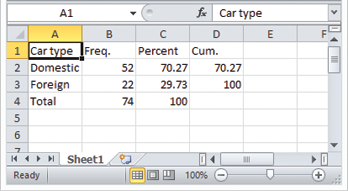
If your t-test shows any significance below 0.05, it means your data is not balanced. Pstest sector logassets logebitda, treated(treated) Psmatch2 treated sector logassets logebitda, outcome (logpension) neighbor(1) commonĪfter running psmatch, you need to make sure your data is balanced. It basically pairs each treated observation with a control observation whose propensity score is closest in absolute value. "neighbor(1)" means I chose the option nearest-neighbor matching. Before you run it, you need to make sure your treated is labeled in the following manner: 0 should be labeled as the control group and 1 should be labeled as the experimental/treatment. This item may be available elsewhere in EconPapers: Search for items with the same title.The following is a full set of code you can run to find your average treatment effect on the treated (your most important indicator result) and to check if the data is balanced (whether your result is valid).

12 In no case was the null hypothesis of equality of the covariates across samples rejected. 05 is often used as the threshold), there is evidence that the mean is different from the hypothesized value. Windows users should not attempt to download these files with a web browser.Ĭitations: View citations in EconPapers (3) Track citations by RSS feed MATCHING USING TEFFECTS (STATA 13) Nearest neighbor matching // 1:1 Nearest Neighbor Matching with replacement, estimate ATT effect. The module is made available under terms of the GPL v3 (). Note: This module should be installed from within Stata by typing "ssc install xtendothresdpd". Keywords: dynamic panel data DPD threshold effects endogeneity (search for similar items in EconPapers) The theory behind the command xtendothresdpd is provided by Kremer, Bick and Nautz (Empirical Economics, 2013). That is, if there is a threshold, the command finds it by using the information given by the data. In this command, the threshold is determined endogenously. If, in this model, we also have a threshold effect and the regressors are endogenous, then we can use the command xtendothresdpd to estimate both the threshold effect and the slope coefficients. If we have a panel data model which is dynamic, meaning that we have the dependent variable and its lagged value in the model. Xtendothresdpd performs estimations of a dynamic panel data threshold effects model with endogenous regressors. Statistical Software Components from Boston College Department of Economics

The result is that nn only has a value for approximately 10 of the observations. I am trying to use psmatch but despite how I edit the caliper or number of matches, the program does not match the majority of my observations. I'm also new to STATA so am quite confused with answers on the forums. XTENDOTHRESDPD: Stata module to estimate a Dynamic Panel Data Threshold Effects Model with Endogenous Regressors Hi everybody, I'm new to the STATA reddit.


 0 kommentar(er)
0 kommentar(er)
